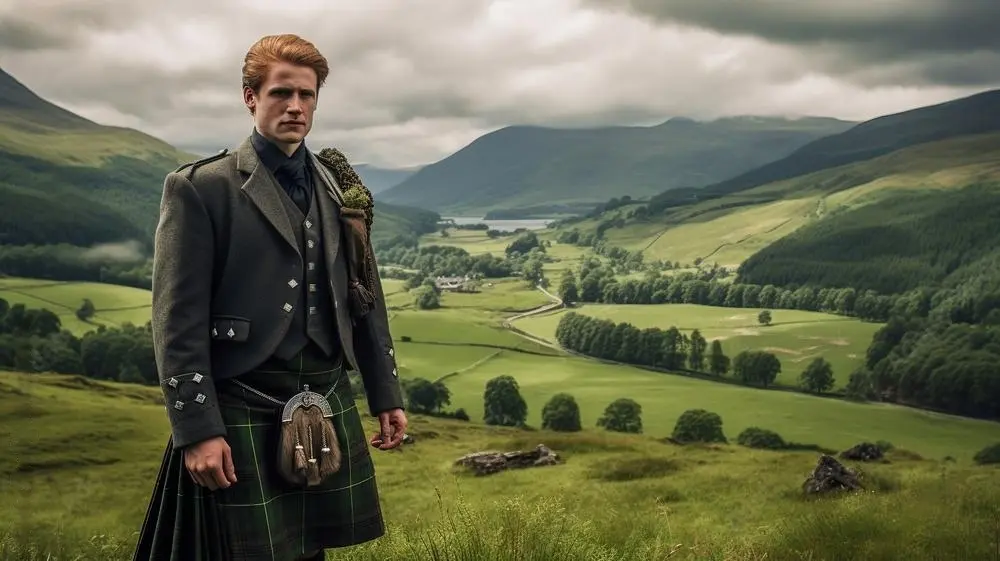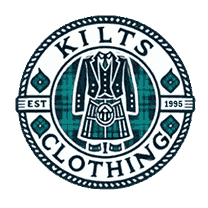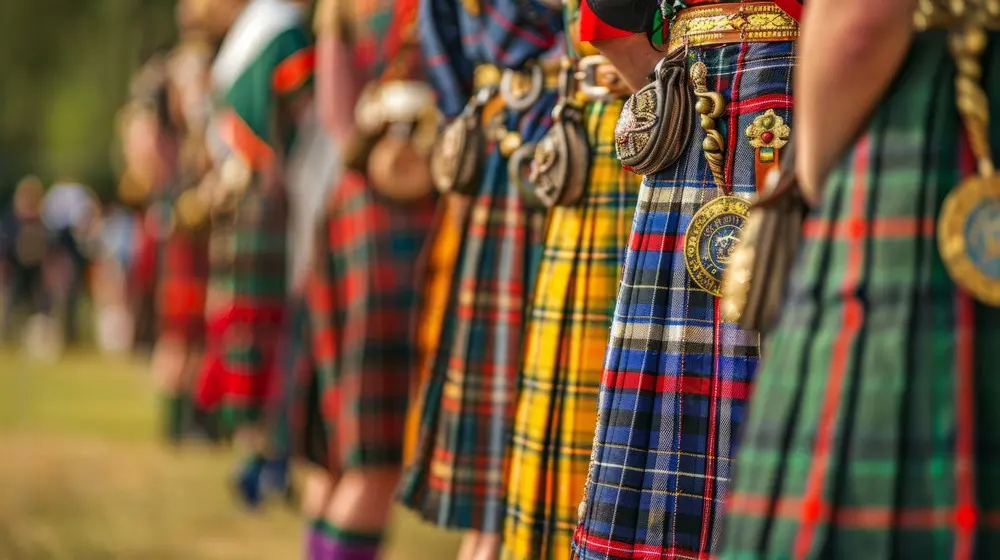kilt: The Ultimate Guide to Kilt Clothing

Introduction to Kilt: A Timeless Garment
Mens Kilt are more than just pieces of fabric; they are deeply woven into Scotland and Ireland's cultural and historical fabric. These Traditional Kilt represent a rich tradition worn by men and women, symbolizing pride, heritage, and identity.
Over the years, kilt clothing has evolved, incorporating modern fashion trends while staying true to its roots. Whether worn for special occasions, sporting events, or casual outings, kilts remain a versatile and enduring symbol of cultural expression.
The Origins of Kilt Clothing
The history of mens kilt clothing is a fascinating journey through time, beginning in the rugged Highlands of Scotland. The earliest form of the kilt, known as the "great kilt," was a large piece of cloth that could be wrapped and draped around the body in various ways.
This garment provided warmth and protection against the harsh Scottish weather. It could be easily adjusted for different activities, from battle to farming. Over time, the great kilt evolved into the "small kilt" or "walking kilt," more similar to the kilts worn today.
Historical Background: From the Great Kilt to Modern Times
The great kilt, or "feileadh mòr," was the precursor to the modern kilt. It was typically made from a piece of woolen cloth, up to nine yards long, pleated and belted at the waist, with the excess fabric draped over the shoulder. This versatile garment could be used as a blanket, cloak, or even a makeshift tent.
By the 18th century, the great kilt evolved into the more tailored "small kilt," pleated and fastened around the waist, freeing the upper body. This change made the kilt more practical for everyday wear and laid the foundation for the modern kilt.
The Scottish Kilt: Tradition and Identity
The Scottish kilt is one of the most recognizable symbols of traditional scotland kilt, embodying the spirit and history of the Scottish people. Each Scottish kilt skirt is typically made from tartan, a patterned cloth associated with a particular clan, region, or family.
The tartan patterns, or "sett," are deeply symbolic, representing the wearer's heritage and lineage. Traditionally, Scottish men wore kilts as part of their everyday attire. Still, today, kilts are worn primarily for special occasions such as weddings, ceremonies, and cultural festivals. A traditional kilt company offers these iconic garments to preserve and celebrate this rich cultural heritage.
Are Kilts Irish? Understanding Irish Kilts
While kilts are often associated with Scotland, they are also important to Irish cultural heritage. However, there are key differences between Scottish and Irish kilts. Unlike the tartan patterns commonly seen in Scottish kilts, Irish kilts are typically solid in color, often in shades of green, saffron, or blue, symbolizing different aspects of Irish identity.
Irish kilts are often worn during cultural events, St. Patrick's Day celebrations, and traditional Irish weddings. So, when asked, "Are kilts Irish?" the answer is yes—Irish kilts have their distinct history and significance.
Irish Kilts: A Different Tradition
Although similar in construction to their Scottish counterparts, Irish kilts are distinguished by their simplicity and solid colors. These kilts are often associated with the Gaelic revival movement of the late 19th and early 20th centuries, which sought to promote Irish culture and heritage.
The saffron kilt, for example, became popular as a symbol of Irish nationalism and is still worn by some Irish regiments today. Irish kilts are also common at Irish cultural events, including music festivals, sports games, and weddings.
Types of Kilts: Exploring Variations
Kilts come in various styles, each with its unique characteristics and purposes. The most well-known types of kilts include:
- Traditional Scottish Kilt: Made from tartan wool, worn for formal occasions.
- Irish Kilt: Typically solid-colored, representing Irish cultural identity.
- Sport Kilt: A modern, lightweight version designed for athletic activities.
- Leather Kilt: A contemporary style often worn for fashion-forward events.
- Renaissance Kilt: A historical recreation often worn at Renaissance fairs.
Each type of kilt serves a different purpose, whether it honors tradition, makes a fashion statement, or provides comfort during physical activity.
The Scottish Kilt Skirt: A Cultural Icon
The Scottish kilt skirt is not just a piece of clothing but a cultural icon representing centuries of Scottish history and tradition. The kilt skirt is typically made from tartan wool, with the pleats sewn into the back and the front apron left flat.
The pattern and colors of the tartan are often associated with a particular clan, region, or family, making each kilt skirt a symbol of personal and communal identity. Today, the Scottish kilt skirt is worn for various occasions, from formal events like weddings and Highland games to casual gatherings and cultural festivals.
Who Wears Kilts? A Look Across Cultures
Kilts are worn by diverse people, transcending national and cultural boundaries. In Scotland and Ireland, men and women wear kilts during cultural celebrations, weddings, and other formal events. However, the appeal of kilts has spread far beyond these regions, with people from different cultures and backgrounds embracing kilts as part of their fashion repertoire. Whether a traditional kilt worn at a wedding or a sports kilt for athletic activities, kilts offer a unique blend of tradition and style that resonates with people worldwide.
Do the Irish Wear Kilts? Modern Perspectives
The Irish wear mens kilt, particularly during cultural and national celebrations. While Irish kilts may not be as widely recognized as their Scottish counterparts, they play an important role in Irish culture. The solid-colored Irish kilts, often in shades of green or saffron, are worn during events like St. Patrick's Day, Irish weddings, and Gaelic sports competitions. The resurgence of interest in Irish heritage and traditions has also led to a renewed appreciation for the Irish kilt, making it a popular choice for those looking to celebrate their Irish roots.

Female Kilt Fashion: Embracing Tradition
While kilts have traditionally been associated with men, female kilt fashion has recently gained popularity. Women's kilts are often designed with a more tailored fit and may feature shorter lengths than men's.
These female kilts can be worn for various occasions, from formal events to casual outings, offering a stylish and feminine take on a traditional garment. Female kilts are versatile and fashionable, whether paired with a blouse and jacket for a formal look or a t-shirt and boots for a more casual style.
Sport Kilts: Functionality Meets Tradition
Sport kilts are a modern adaptation of the traditional kilt, designed for those who lead active lifestyles. Made from lightweight, breathable fabrics, sport kilts offer the comfort and freedom of movement needed for athletic activities.
Whether participating in a Highland game, hiking, or running, a sports kilt provides a practical alternative to traditional athletic wear. These kilts often feature adjustable waistbands and quick-drying materials, making them ideal for casual wear and outdoor adventures.
Modern Kilt Fashion: A Contemporary Twist
Modern kilt fashion has evolved to include various styles and materials, catering to diverse tastes and preferences. The modern kilt can be worn in various settings, from casual gatherings to high-fashion events, from traditional woolen kilts to contemporary leather kilts.
Designers have experimented with different fabrics, colors, and patterns, creating kilts that appeal to a broader audience. Whether you're looking for a classic tartan kilt or a bold leather kilt for a night out, modern kilts offer something for everyone.
How to Wear a Kilt: A Step-by-Step Guide
Wearing a kilt properly is essential for achieving the traditional look. Here's a step-by-step guide on how to wear a kilt:
- Start with the Basics: Put on your kilt socks (kilt hose) and flashes. The socks should reach just below the knee.
- Position the Kilt: Wrap the kilt around your waist, with the pleats at the back and the aprons overlapping at the front. The kilt should sit high on your waist, just above the navel.
- Secure the Kilt: Fasten the kilt using the straps and buckles on the side. Ensure that the kilt is fitted snugly but not too tight.
- Add the Kilt Belt: A wide leather kilt belt adds style and function, helping to keep the kilt in place.
- Place the Kilt Pin: The kilt pin is an essential accessory that adds a decorative touch while keeping the front apron secure. The pin should be placed on the right side of the front apron, about 4 inches from the bottom and 2 inches from the edge.
- Complete the Look: Depending on the occasion, add a kilt jacket, sporran, and ghillie brogues (traditional kilt shoes) to complete your outfit.
Wedding Kilts: Tradition Meets Elegance
Wedding kilts are popular for grooms and wedding parties, particularly in Scotland and Ireland. These formal kilts are often made from luxurious fabrics and feature intricate details that mark the special occasion.
The men's wedding kilts may be crafted from the groom's clan or a tartan with special significance to the couple. Wedding kilts are typically paired with formal accessories, such as a Prince Charlie jacket, a waistcoat, and a sporran, creating a sophisticated and elegant look for the big day.
Business Casual Kilts: Bringing Kilts to the Office
The concept of a business casual kilt may seem unconventional. Still, it's gaining popularity as a stylish and comfortable alternative to traditional office wear. Business casual kilts are often made from solid-colored fabrics. They are designed to be worn with dress shirts, blazers, and polished shoes.
These kilts offer a unique blend of tradition and modernity, allowing men to express their individuality while maintaining a professional appearance. Whether attending a business meeting or a casual office event, a business casual kilt can help you stand out in style.
Kilt Accessories: Completing the Look
Kilt accessories are essential for creating a polished and complete kilt outfit. Some of the most important kilt accessories include:
- Kilt Belt: A wide leather belt that adds style and function, helping to keep the kilt in place.
- Kilt Pin: A decorative pin placed on the front apron of the kilt, it serves both a practical and aesthetic purpose.
- Sporran: A pouch worn at the front of the kilt, used to carry small items.
- Kilt Socks (Kilt Hose) are long socks worn with the kilt, often accompanied by flashes (decorative ribbons).
- Kilt Shoes (Ghillie Brogues): Traditional shoes with long laces that wrap around the ankle, often worn for formal occasions.
- Sgian Dubh: A small knife worn in the kilt sock, traditionally part of the Highland dress.
These accessories enhance the appearance of the kilt and serve practical purposes, ensuring that your kilt outfit is both stylish and functional.

Kilt Pattern: The Significance of Tartan
The kilt pattern, or tartan, is one of the most distinctive features of a kilt. Each tartan pattern represents a specific clan, region, or family in Scotland, making it a powerful symbol of identity. The colors and patterns of tartan are deeply symbolic, with each design telling a unique story.
While Scottish kilts typically feature bold tartan patterns, Irish kilts often showcase more subdued designs. Tartan patterns are a key element of traditional kilts and play a significant role in modern kilt fashion.
Kilt vs Skirt: Understanding the Differences
A common question when discussing kilts is, "Is a kilt a skirt?" While kilts and skirts may appear similar, there are important differences between the two garments. The main difference between a kilt and a skirt is their construction and cultural significance. Kilts are typically pleated at the back, made from wool, and feature tartan patterns.
In contrast, skirts can be made from various fabrics and are worn by people of all cultures. Kilts are deeply rooted in Scottish and Irish traditions, while skirts are more universally worn.
Kilt Shoes and Socks: Perfecting the Ensemble
Choosing the right shoes and socks to wear with a kilt is essential for completing the look. The most traditional choice for kilt shoes is the ghillie brogue, a type of shoe with long laces that wrap around the ankle.
Ghillie brogues are typically worn for formal occasions like weddings and ceremonies. You can opt for loafers, casual boots, or even sneakers for more casual settings. Kilt socks, or kilt hose, should reach just below the knee and are often paired with flashes, which are small decorative ribbons that match the tartan of the kilt.
Custom Kilts: Tailoring Tradition
Custom kilts allow you to create a kilt that is truly your own. Whether you want a specific tartan pattern, unique embroidery, or a particular fabric, custom kilts allow you to personalize every aspect of your kilt.
They are ideal for those who want a one-of-a-kind garment that reflects their personal style and heritage. Whether you're looking for a kilt for a special occasion, such as a wedding, or want a unique kilt for everyday wear, custom kilts offer endless possibilities.
How to Dress a Kilt Casually
Wearing a kilt doesn't always have to be formal. Kilts can be dressed down for casual outings and everyday wear. Here are some tips on how to dress a kilt casually:
- Pair with a T-Shirt or Casual Shirt: Instead of a formal jacket, opt for a simple t-shirt, polo shirt, or casual button-up shirt.
- Choose Comfortable Footwear: Casual boots, loafers, or sneakers work well with a casual kilt outfit.
- Skip the Formal Accessories: Leave out formal accessories like the kilt pin and sporran for a more relaxed look. A simple belt can suffice.
- Consider a Sport Kilt: If you're looking for something more functional, a sport kilt made from lightweight, breathable fabric is perfect for casual wear.
Kilt Pin Placement: The Final Touch
Kilt pin placement is crucial for achieving a polished and traditional look. The kilt pin is typically placed on the right side of the front apron, about 4 inches from the bottom and 2 inches from the edge. The kilt pin not only adds a decorative touch but also helps keep the kilt's front apron in place, preventing it from flapping open. The design of the kilt pin can vary, ranging from simple, understated designs to more elaborate, ornate pieces.
Men Wearing Kilts: Confidence in Style
Men wearing kilts often do so with a sense of pride and confidence. Whether embracing their Scottish or Irish heritage or simply enjoying the unique style of kilts, men wearing kilts stand out in a crowd.
Kilts are not just a nod to tradition but a bold fashion statement that speaks to individuality and cultural pride. Modern kilts offer a wide range of styles, from traditional tartan kilts to contemporary leather kilts, allowing men to express their style confidently.
Conclusion: The Lasting Appeal of Kilts
Kilts are a timeless and versatile garment that continues to captivate people worldwide. Whether worn for cultural events, weddings, or as part of modern fashion, kilts offer a unique blend of tradition, style, and practicality. From the rich history of the great kilt to the contemporary adaptations of modern kilts, the enduring appeal of kilts lies in their ability to evolve while staying true to their roots.
Whether you're exploring your heritage, making a fashion statement, or simply enjoying the comfort and freedom that kilts provide, there's no denying that kilts are here to stay.
FAQs
Kilts are traditionally associated with Scotland and are a key part of Scottish national and cultural identity. They are also worn in Ireland, but they are more often linked to Scottish heritage.
Kilts are a symbol of Gaelic pride and cultural heritage. Originally worn by Highlanders in the 16th century, they have become a formal and ceremonial dress symbolizing clan kinship, regional pride, and the rich history of the Scottish people.
Traditionally, nothing is worn under a kilt. It’s often said that a true Scotsman wears nothing beneath his kilt. However, in modern times, personal preference and the event’s formality can influence whether someone wears undergarments.
Men traditionally wear Kilts, particularly in Scotland, as part of Highland dress for formal occasions, cultural events, and weddings. However, kilts are increasingly worn by people of all genders and cultures, reflecting a broader appreciation of Scottish heritage.
While kilts are primarily associated with Scotland, they are also part of Irish tradition, particularly within Irish National Tartan and pipe bands. The Irish kilt, distinct in style and usage, has its traditions and designs linked to Irish heritage.
Irishmen wear kilts, especially for formal occasions, pipe band performances, and cultural events. The Irish kilt typically features tartans that represent different Irish counties and families.
Yes, women can and do wear kilts. Women’s kilts are often styled in a similar tartan fabric as men’s. Still, they may be tailored differently to fit women’s fashion styles. Kilts for women are popular in both Scottish and Irish traditions for formal wear and cultural events.
Kilts are Irish and Scottish but are more commonly and traditionally linked to Scottish culture. The Irish kilt, while also traditional, is less internationally recognized but holds significance within Ireland, particularly among Irish pipe bands and in representing county colors


